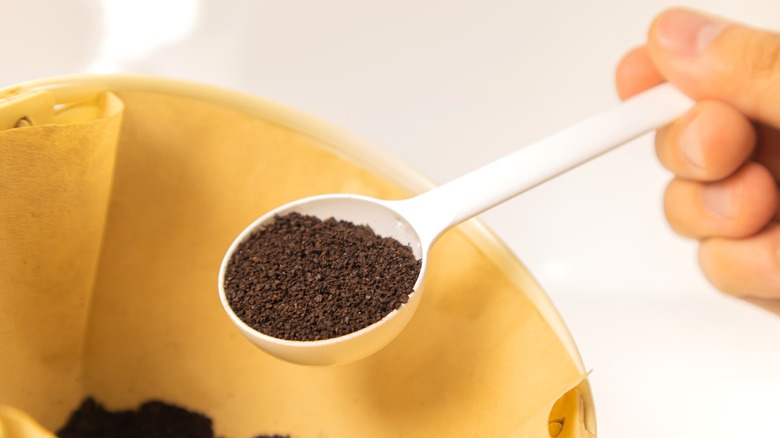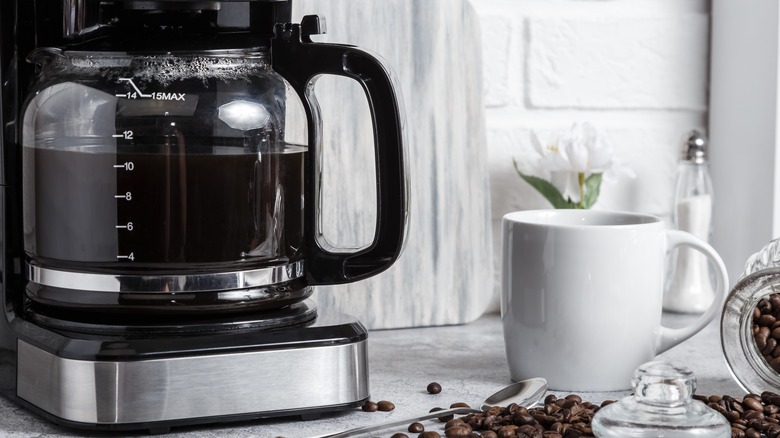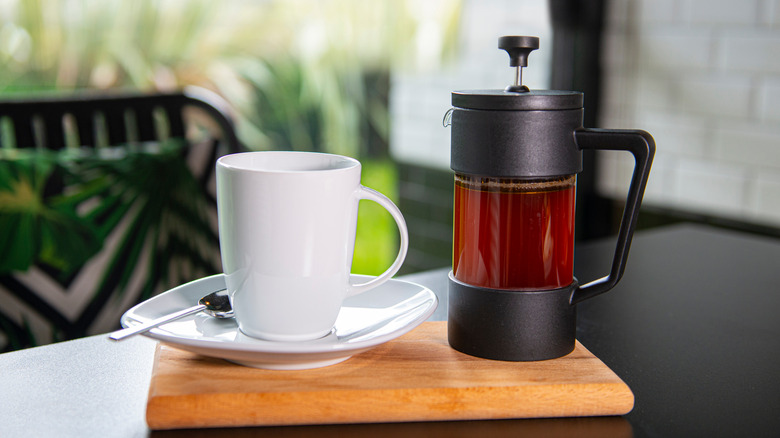Why You Don't Always Want To Follow The Directions On The Back Of A Coffee Bag
Coffee has been an influential part of cultures around the world for centuries, and there was even a time when some countries considered it so powerful that they banned coffee entirely. There are as many types of coffee drinkers as there are types of coffee. Some aficionados attend coffee cuppings to refine their palates, while others are content with drinking coffee made with a hotel coffee maker (bad idea, by the way).
Whether you're having your first cup to get you going in the morning or enjoying a post-dinner espresso with dessert, you want the flavor and strength to be exactly right. However, exactly right can be very subjective as some coffee drinkers like their brew to be weak, and others aren't happy until their java looks like mud.
Coffee is easy to make, right? Just follow the directions on the back of the bag. But which directions? Maxwell House instructs its customers to use 6 ounces of water and one tablespoon of coffee per cup, but Starbucks has different instructions. Who's right, and does the back of the bag provide all the information you need to make coffee the way you like it?
The 'golden ratio'
To make the perfect cup of coffee, there are essential things you need to know that you won't find printed on the back of the bag. For instance, what brewing method are you using? The bag may be a good guide if you're making ordinary drip coffee in the office coffee maker, but it may lead you astray if you're using a French press or the pour-over method.
Most bags of coffee direct you to use clean water — filtered is best, which is good advice for any brewing method. But if you're opting for the pour-over or French press, you must boil the water and allow the temperature to cool to a few degrees below boiling before you pour it on the coffee.
Regarding the discrepancy about how much coffee to use per cup, many coffee bags suggest using six ounces of water to one tablespoon of coffee. However, the "golden ratio," as PureWow puts it, is two tablespoons of coffee for every six ounces of water.
Whole beans are the gold standard
Grinding whole beans will ensure the freshest flavor, and doing it yourself allows you to control the grind size. Unfortunately, none of the information on the way to grind coffee is printed on the bag of beans.
Today suggests pulsing the beans for short intervals if you're using a drip coffee maker. For a coarse grind for an automatic coffee maker, pulse at intervals for about 10 seconds. A medium grind, which works best with French presses — finer grinds will often slip through the sieve — will take a few seconds more. Peet's Coffee recommends grinding the beans to the "coarseness of sand" for pour-over and "coarse sea salt" for French press brewing.
And, of course, filter packs and coffee pods such as those for Nespresso or Keurig machines are a great convenience, but they don't allow you to adjust the strength of your coffee.


